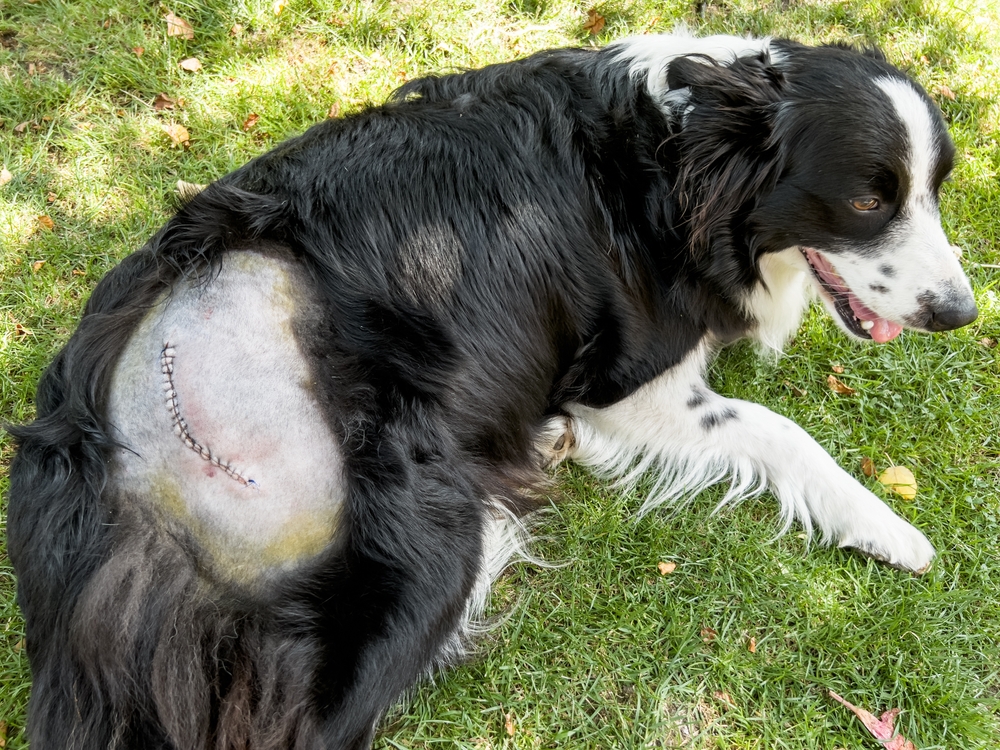When you bring your pet home after surgery, it's natural to feel worried and have questions about caring for them during recovery. Monitoring their stitches is a key part of post-operative care, so knowing what to observe is helpful.
The following serves as a general guide to the do's and don'ts of post-operative wound management, covering daily care basics and when to consult your vet.

Stages of Wound Healing
Whether due to injury or surgery, the skin undergoes the same basic healing stages. Healing time depends on several factors: the wound's size, shape, depth, location, cleanliness, any disruptions to healing, and the individual's health.
For example, a cat castration wound typically has skin without tension, is very small, sterilely prepared, and involves a thin full skin thickness layer, healing in 3-7 days. Conversely, a dog bite wound over the knee often has tense, moving skin, is irregular, contaminated, may affect multiple tissue layers including muscle, and takes 7-21 days or longer to heal.

Regardless of the wound type, all full-thickness skin wounds progress through three healing stages:
1. Inflammation
Blood vessels first constrict to stop bleeding, then dilate to let white blood cells (like neutrophils and macrophages) reach the area to address bacteria, damaged tissue, or contamination—this causes swelling and inflammation. In clean surgical wounds, this phase should be mild; more bacteria or contamination leads to more white cells and pus.
2. Proliferation
In a healthy wound, fibroblasts (connective tissue cells) and capillaries (tiny blood vessels) form a scaffold for other cells to grow and repair damaged tissues. Surgically closed incisions may start this phase in 48 hours. Open wounds need granulation tissue (the scaffold) to fill the area before new skin cells (epithelial cells) cover it.
3. Remodeling
Scar formation occurs as new collagen fibers align along tension lines to strengthen the new skin. For large wounds, this can take up to 2 years, and scar tissue remains slightly weaker than original skin.

Different Types of Wound Closure
Depending on surgery type, wound location, incision size, and surgeon preference, your dog may have nylon skin sutures, intradermal sutures (dissolvable under the skin), skin staples, or tissue glue. The closure type doesn't majorly affect healing, but some dogs are sensitive to certain suture materials. Closely monitoring the wound and contacting your vet about concerns is crucial.
Pros and Cons of Keeping Wounds Covered
Not all post-surgical wounds need covering. Applying dressings to some dog body parts is difficult, and visibility is sometimes important. Pros of covering include contamination protection, abrasion prevention, and added defense against scratching/licking. Cons are delayed detection of bleeding/swelling/redness, potential pyoderma from coverings, and dogs often being more irritated by dressings than the wound itself.
How To Check Your Dog’s Wound
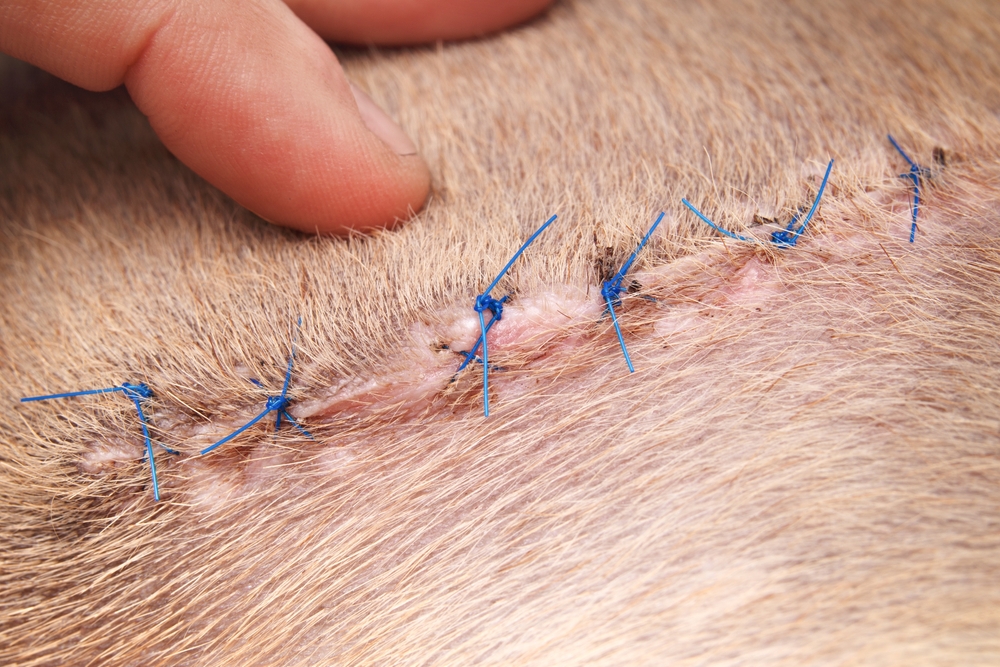
Your vet will outline recovery steps, which vary by pet and surgery. Some wounds have dressings; others are open. Depending on location, your dog may need a surgical suit or e-collar. Keep these on, especially unsupervised, as dogs can quickly damage wounds. If struggling with collars/suits, ask your vet about alternatives—you might even make a custom collar at home.
Here’s how a clean surgical wound should look during healing and what to watch for (BOLO):
Day 1-3: Inflammation
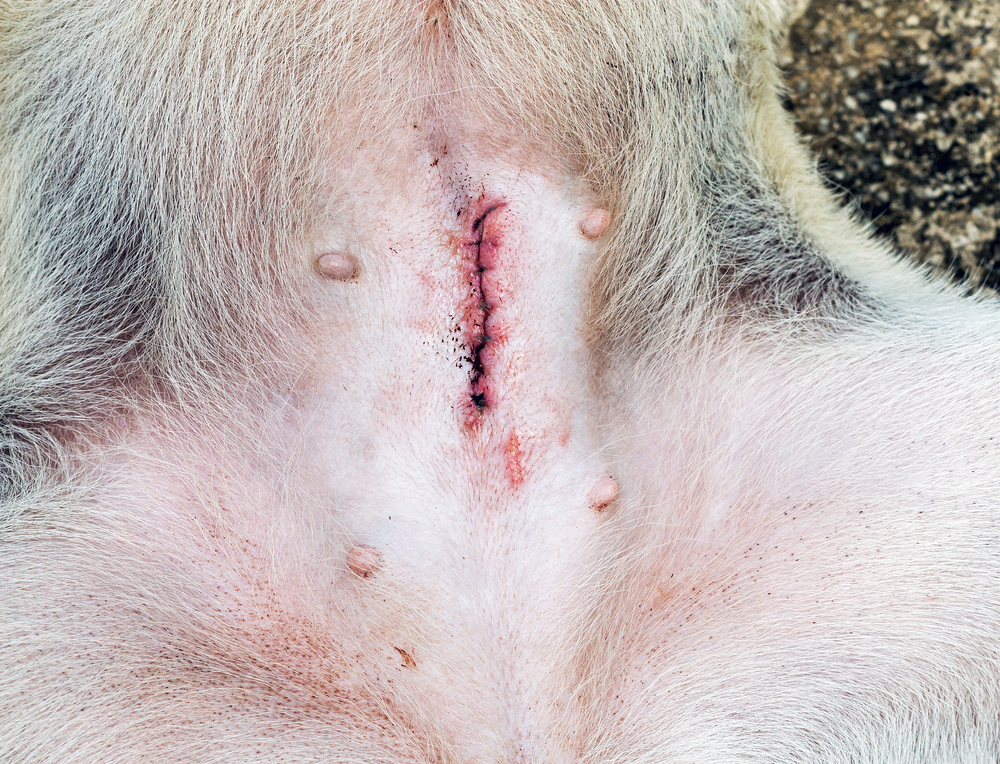
In the first few days, slightly pink, inflamed wound edges are normal.
BOLO: Swelling where sutures dig into the skin; excessive pain beyond mild tenderness; discharge—small blood-tinged fluid is okay, but not fresh blood or pus.
Day 4-7: Proliferation

Active healing starts, and regrowing shaved hair may make the wound itchy or irritating for your dog.
BOLO: Licking, scratching, or chewing the wound; sutures or the wound pulling apart; large swellings along the incision line.
Day 7 → : Remodeling
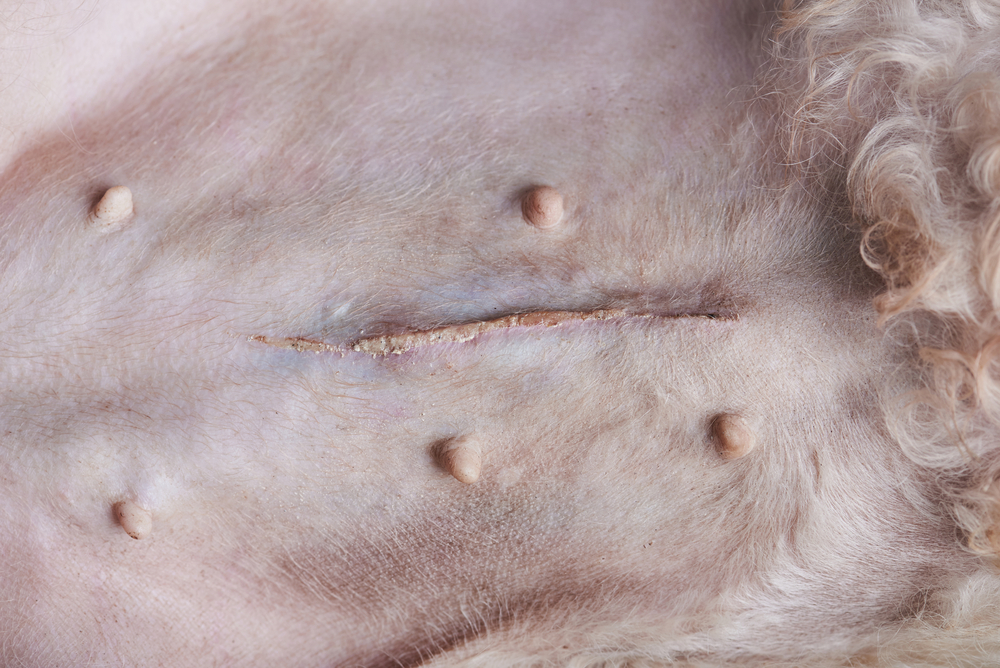
Sutures are no longer needed but are often left in 5-7 more days for safety. The incision should be knitted together, and gentle pressure shouldn’t cause discomfort.

Common Surgical Wound Complications
Wound Breakdown
Also called wound dehiscence, this is partial or total failure of wound closure. Causes include infection, suture failure, or excessive activity. Treatment depends on location, size, and healing stage—internal dehiscence often needs surgery, while skin incision breakdown may be treated with dressings, staples, or re-closure.
Seroma
A common complication, especially after abdominal surgery or tumor removal, seroma is a collection of inflammatory fluid aiding healing. Most resolve with rest and anti-inflammatories, but some need draining.
Infection
Post-operative infections are less common than expected, but they occur and need prompt treatment. If the wound is red, warm, swollen, or has pink, yellow, or creamy discharge, contact your vet immediately.
Suture Reactions
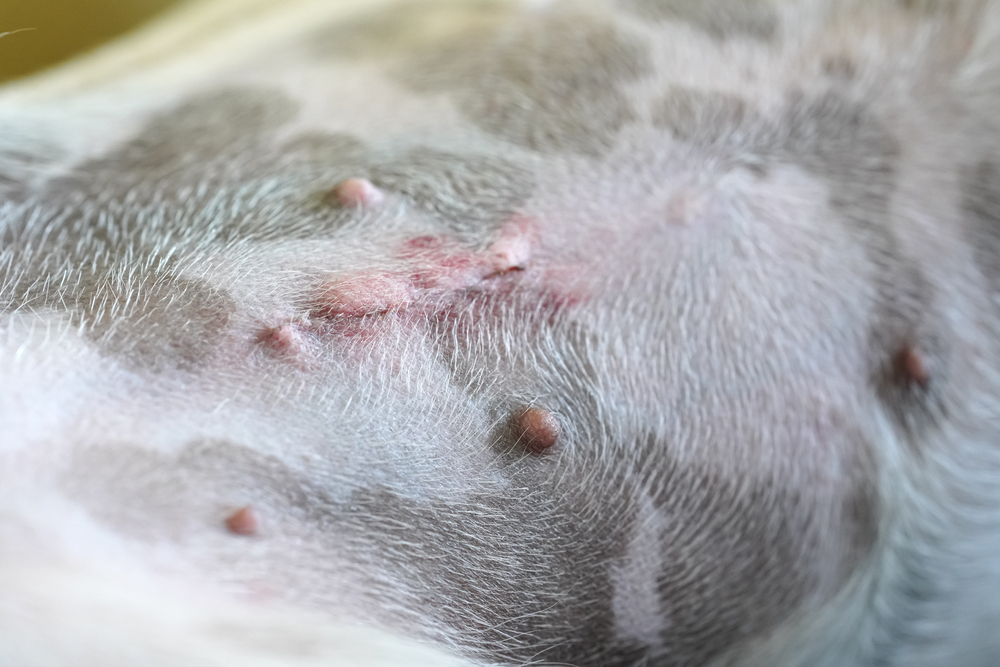
Suture materials have improved, but some dogs are sensitive, causing inflammation or lumps along the suture line (mild to severe), often during proliferation. Painless small bumps during healing are common, but consult your vet if worried.

Frequently Asked Questions
Should I Clean The Wound?
Unless your vet advises otherwise, avoid cleaning the surgical incision. Small crusted blood or scabs are normal—leave them to prevent contamination or healing disruption.
If the wound gets dirty, use cotton wool dipped in sterile saline or cooled boiled water (no salt), squeeze out excess, and gently dab the surrounding skin—avoid touching the incision itself.
Your dog may be tender, so approach slowly: use "warm up" cotton wool pieces to get closer, then a fresh one to clean around the incision.
How Often Do I Need To Go Back For A Check-up?
Frequency depends on your dog’s age, health, and surgery type. For routine procedures like spaying or castration, vets often recommend checks at 3 and 7 days, with suture removal around 14 days—protocols vary by practice.
If worried about the wound or recovery, don’t wait for the next appointment—contact your vet immediately. Online veterinary services can assist if your vet is unavailable.

How Long Does It Take For Dissolvable Sutures To Dissolve?
Suture materials have different breakdown times based on their purpose. For example, intestinal sutures start breaking down after a couple of weeks, abdominal muscle layer sutures after 4-6 weeks, and intradermal sutures after 2-3 weeks. However, some deep sutures may be felt months later.
Should I Cover The Wound With Ointment?
Never apply ointments, gels, or creams to a surgical incision unless your vet specifically instructs it. Most human skin products are unsuitable for dogs and can cause harm.

Final Thoughts
You should now feel more prepared to monitor your dog post-surgery. A key challenge is limiting their activity soon after! Use collars or suits to prevent licking/scratching, even if your dog dislikes them—it’s better than needing another surgery.
Your vet prefers examining your dog or seeing photos over you worrying silently, so don’t hesitate to call with concerns.
Featured Image Credit: DyziO, Shutterstock
